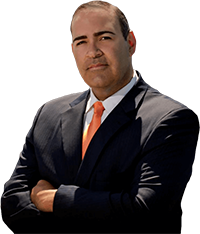We are all in the thick of the holiday season. There will be more San Marcos DUI checkpoints around several locations in the county. San Marcos Sheriffs branch conducts San Marcos DUI checkpoints often. The San Diego Sheriffs are very active in the area for DUI and will conduct San Marcos checkpoints or San Marcos saturation patrols often. Be safe and remember to know your rights before heading in.
San Diego County Sheriff’s deputies arrested two drivers on DUI charges and issued 30 citations for other violations at a checkpoint Friday night in San Marcos.
A total of 1,415 vehicles passed through the checkpoint in the 1600 block of San Elijo Road and 35 were sent for further evaluation.
Two drivers were arrested on suspicion of DUI, four vehicles were impounded and 30 citations were issued for other violations, mostly driving without a proper license.
“Checkpoints are placed in locations that have the greatest opportunity for achieving drunk and drugged driving deterrence and provide the greatest safety for deputies and the public,” the sheriff’s department said in a statement on Saturday morning.
If you are charged with a San Diego DUI or other Criminal offense, you need to call our firm immediately. We are available to take action on your case today. Please email or call us at 858-751-4384 or email me at [email protected] to schedule a free consultation. The key is to be proactive.
The full article can be found here.
San Diego DUI Checkpoint law:
In the landmark case Ingersoll v. Palmer, the California Supreme Court carved out an exemption to the “search and seizure” rule that would pave the way for twenty-five years of DUI checkpoints.
We felt it would be appropriate, at the quarter-century mark, to review the case and remind the public of the holdings.
DUI checkpoints were a new thing back in mid-1980s California. In fact, Ingersoll was filed just three days after California’s first DUI checkpoint. State officials studied existing cases and statutes and devised what was supposed to be a constitutional plan. Much of that plan was incorporated into the Ingersoll opinion, which likens DUI checkpoints to agricultural checkpoints and airport screenings to avoid the Fourth Amendment.
The following factors help determine the constitutionality of a checkpoint:
- Decision making by supervisors: This is important to ensure that checkpoints aren’t set up in “arbitrary and capricious” locations. The court didn’t say so, but we’re guessing they wanted to avoid any accusations of racial profiling.
- Limits on discretion of field officers: The theme of distrust of the officer continues. Strict procedures and a random selection of drivers according to a preset pattern (every third driver, for example) are suggested to avoid abuse.
- Maintenance of safety conditions: We’re not sure how it applies to constitutionality, but the court wanted lots of bright lights and signs.
- Reasonable location: The location should be based on relevant factors, such as areas with high incidences of DUI or DUI accidents.
- Time and duration: There are no hard and fast rules, but the timing should be set to optimize the effectiveness of the checkpoint. In other words, put ’em up when the drunks are out.
- Indicia of official nature of roadblock: This is more babble about bright lights and warning signs. They do mention that the lights and signage should be visible for the sake of notification to the drivers. Drivers also can’t be pulled over for avoiding the checkpoint, unless they violate a law to do so.
- Length and nature of detention: The time of the stop should be minimized as to infringe on a person’s rights as little as possible. That means peek at the eyes, smell for booze, and look for cans. If there are no signs of intoxication, the driver should be let go. If they look or smell drunk, field sobriety tests are appropriate.
- Advance publicity: Ingersoll was in favor of advance publicity. It referred to the deterrent effect and stated that the notice minimizes intrusiveness to a person’s rights. In 1993, the court in People v. Banks stated that publicity was not a requirement, but it certainly helps.
These guidelines are not created equal. Some, like the random selection of cars, are more important than others, like advance publicity. As for the applicability to a specific checkpoint, we’d recommend discussing the matter with a local attorney.


